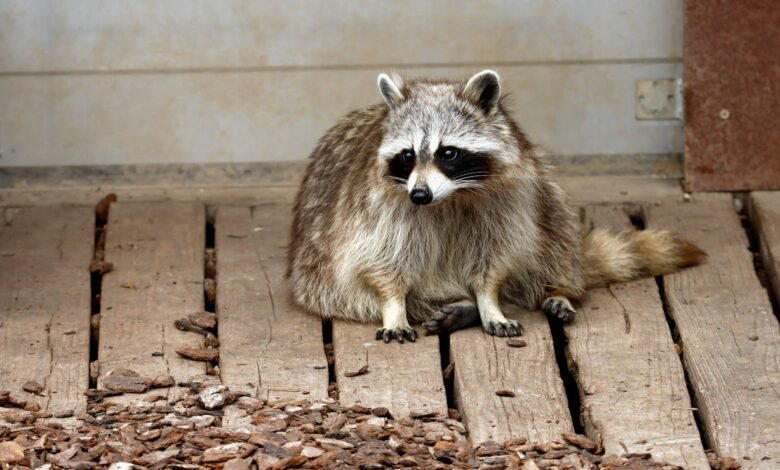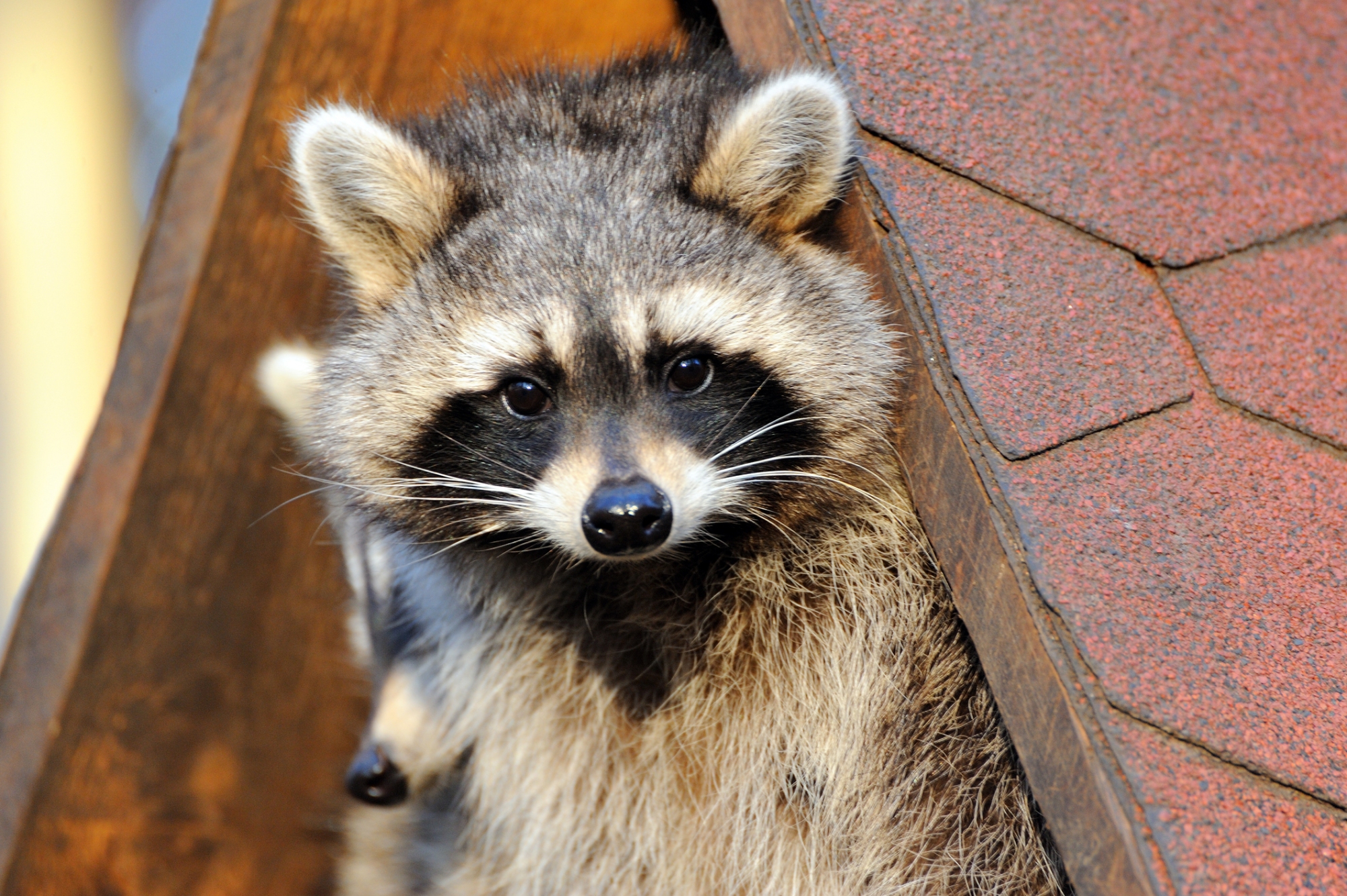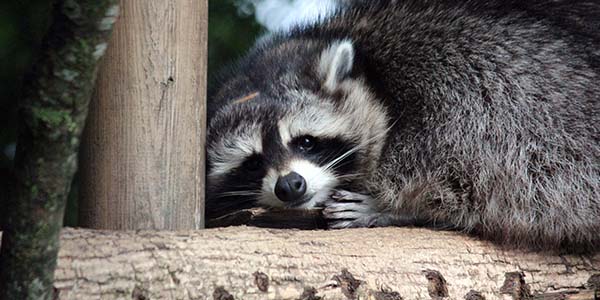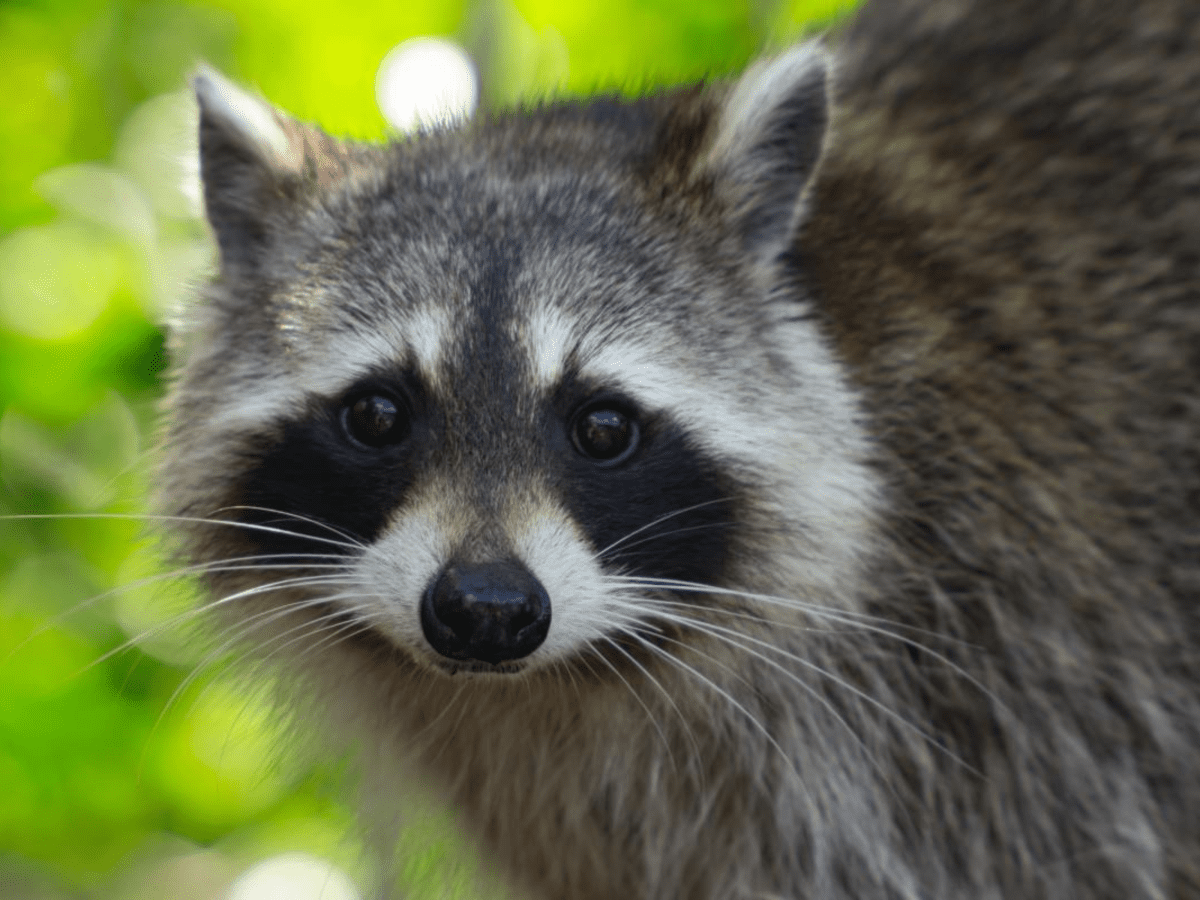How Long Do Raccoons Live? Unveiling Their Lifespan Secrets

How Long Do Raccoons Live? Raccoons typically live for 2-3 years in the wild. However, with proper care and protection from predators and diseases, they can live up to 10-15 years in captivity.
Raccoons are small to medium-sized mammals known for their distinctive black mask-like markings on their face and ringed tail. They are found in North and Central America, and are highly adaptable creatures, thriving in various habitats such as forests, marshes, and urban areas.
Raccoons are omnivores, feeding on a diet consisting of both plant matter and small animals. They are known for their intelligence and dexterity, often using their front paws to manipulate objects and open containers. With their curious and mischievous nature, raccoons have become a familiar sight in many neighborhoods, often raiding trash cans and causing mischief.
Introduction To Raccoon Lifespan
Raccoons typically live for 2-3 years in the wild due to predators, diseases, and harsh environments. However, in captivity, they can survive up to 20 years, benefiting from a safer and more controlled lifestyle. Their lifespan varies based on various factors like food availability and human intervention.
Raccoons are a common sight in many parts of the world, known for their distinctive black masks and ringed tails. These omnivorous animals are adaptable and can thrive in a range of environments, from forests to urban areas. But how long do raccoons live? The answer depends on several factors, which we’ll explore in this article.
Factors Influencing Longevity
Raccoon lifespan varies depending on a variety of factors, including genetics, diet, environment, and predation. In the wild, raccoons typically live for 2-3 years, although some individuals have been known to survive for up to 5 years. One of the primary factors influencing raccoon lifespan is their diet. Raccoons are opportunistic feeders and will eat just about anything, from fruits and nuts to small animals and insects. However, a poor diet can shorten a raccoon’s lifespan, as it can lead to malnutrition and disease. Another important factor is predation. Raccoons have many natural predators, including coyotes, bobcats, and owls. In areas with high predator populations, raccoons may have shorter lifespans.
Wild Vs. Captive Life Expectancy
While raccoons typically live for only a few years in the wild, their lifespan can be significantly longer in captivity. Raccoons kept in zoos or as pets can live for up to 20 years, although this is rare. In captivity, raccoons are protected from many of the threats that they face in the wild, such as predation and disease. They also receive regular veterinary care and a consistent, high-quality diet.
However, it’s important to note that keeping raccoons as pets is illegal in many areas, and can be dangerous for both the animal and the owner. In addition, captive raccoons may suffer from boredom and lack of mental stimulation, which can lead to health problems and a shorter lifespan. In conclusion, raccoon lifespan varies depending on several factors, including diet, environment, and predation. While raccoons typically live for only a few years in the wild, they can live much longer in captivity. However, it’s important to remember that raccoons are wild animals and should not be kept as pets.
Early Life Stages
Raccoons typically live for about 2-3 years in the wild, facing various threats like predators and disease. In captivity, they can survive up to 20 years due to a safer environment and better access to food and healthcare.
Birth And Initial Development
Raccoons are born blind and deaf, with a full coat of fur.
They open their eyes at around three weeks old.
Survival Challenges For Juveniles
Young raccoons face dangers from predators like owls and coyotes.
They learn survival skills from their mother in the first year.
Adulthood And Maturity
Raccoons typically live around 2-3 years in the wild, but in captivity, they can reach up to 20 years. Adulthood and maturity in raccoons are marked by their ability to survive and thrive independently in various environments.
Reaching Maturity
Raccoons, known for their mischievous and curious nature, go through various stages of development before reaching adulthood. When raccoons are born, they are completely dependent on their mothers, relying on them for nourishment and protection. It takes approximately 16 weeks for raccoon kits to open their eyes and start exploring their surroundings. As they grow, they develop the skills necessary to survive in the wild, such as climbing trees, swimming, and foraging for food.
During their first year of life, raccoons undergo significant physical and behavioral changes as they transition into adulthood. They start venturing out on their own, leaving their mothers’ care and establishing their territories. This period is crucial for their development as they learn to navigate the challenges of the natural world and adapt to their surroundings.
Reproduction And Its Impact On Lifespan
Raccoons reach sexual maturity at around 1 year of age, marking the start of their reproductive phase. Female raccoons, also known as sows, typically give birth to litters of 2 to 5 kits once a year. The gestation period for raccoons lasts approximately 63 days, after which the newborn kits are born helpless and rely on their mothers for survival.
Reproduction has an impact on the lifespan of raccoons. The energy and resources required for breeding and raising young can take a toll on their overall health and longevity. Female raccoons tend to have shorter lifespans compared to males, as the stresses of reproduction can accelerate their aging process.
On average, raccoons in the wild have a lifespan of 2 to 3 years, although some individuals can live up to 5 years or more. Factors such as habitat quality, availability of food, and exposure to predators and diseases can also influence their lifespan.
Understanding the stages of raccoon development and the impact of reproduction on their lifespan provides valuable insights into their fascinating lives. While raccoons may not live as long as some other wildlife species, they make the most of their time in the wild, adapting to their environment and leaving their playful mark on the world around them.

Credit: www.trutechinc.com
The Golden Years
Raccoons typically live for about 2-3 years in the wild, but can live up to 20 years in captivity. With their adaptability and resourcefulness, these creatures make the most of their golden years, thriving in various environments.
As with humans, raccoons also age and experience changes in their body functions. The golden years of raccoons are marked by the onset of various health issues and signs of aging. In this section, we will discuss the common signs of aging and health issues that affect elderly raccoons.
Signs Of Aging
As raccoons age, they begin to experience changes in their physical appearance and behavior. Some of the common signs of aging in raccoons include:
- Gray hair around the face and neck
- Decreased activity levels
- Difficulty climbing trees or fences
- Weight gain or loss
- Decreased eyesight and hearing
- Loss of muscle tone
If you notice any of these signs in a raccoon, it is likely that they are entering their golden years. It is important to provide them with the care and attention they need during this time.
Common Health Issues In Elderly Raccoons
Just like humans, elderly raccoons are more prone to certain health issues. Some of the common health issues that affect elderly raccoons include:
| Health Issue | Symptoms | Treatment |
|---|---|---|
| Arthritis | Limping, stiffness, difficulty moving | Pain medication, weight management, physical therapy |
| Dental problems | Bad breath, difficulty eating, tooth loss | Dental cleaning, extractions, proper diet |
| Heart disease | Coughing, difficulty breathing, lethargy | Medication, proper diet, exercise |
| Kidney disease | Increased thirst, decreased appetite, weight loss | Fluid therapy, medication, proper diet |
It is important to note that these health issues can also affect younger raccoons, but they are more common in elderly raccoons. Regular check-ups with a veterinarian can help detect and manage these health issues in a timely manner. In conclusion, the golden years of raccoons are marked by changes in their physical appearance and behavior, as well as the onset of certain health issues. By providing them with proper care and attention, we can ensure that they live a comfortable and healthy life in their golden years.
Predators And Threats
As with any wildlife, raccoons face a variety of predators and threats that can impact their lifespan. Understanding these factors can provide insight into the average lifespan of raccoons and the challenges they face in the wild.
Natural Predators
Raccoons have a range of natural predators, including coyotes, bobcats, and owls. These predators pose a significant threat to raccoons, particularly the young and the elderly.
Human Impact On Raccoon Lifespan
Human activities, such as urbanization and habitat destruction, have a direct impact on the lifespan of raccoons. Vehicle collisions are a major cause of raccoon fatalities, as these animals are often drawn to urban areas in search of food and shelter.
Disease And Mortality
When it comes to raccoons, understanding their lifespan is important in order to gain insight into their overall health and well-being. One factor that greatly affects the lifespan of raccoons is disease and mortality. In this section, we will explore the common diseases that affect raccoons, as well as the impact of injuries and recovery on their survival.
Common Diseases
Raccoons are susceptible to a range of diseases that can significantly impact their lifespan. Some of the most common diseases that affect raccoons include:
- 1. Canine Distemper: This viral disease affects the nervous system of raccoons and can be fatal. Symptoms include fever, respiratory issues, and neurological abnormalities.
- 2. Rabies: Rabies is a viral disease that affects the central nervous system and can be transmitted to humans. Infected raccoons may exhibit aggressive behavior, disorientation, and paralysis.
- 3. Leptospirosis: This bacterial infection affects the liver and kidneys of raccoons. It can lead to organ failure and is often transmitted through contaminated water or urine.
- 4. Roundworms: Raccoons can carry roundworm eggs in their feces, which can pose a threat to humans and other animals if ingested. Infection can lead to severe health issues, including blindness and organ damage.
These are just a few examples of the diseases that raccoons are prone to. It is important to be aware of these diseases and take necessary precautions to prevent their spread.
Injury And Recovery
Raccoons are agile creatures, but they are not immune to injuries. Injuries can occur due to falls, encounters with vehicles, or territorial disputes with other raccoons. The ability to recover from these injuries greatly impacts their chances of survival.
While some injuries may heal with time and rest, others may require veterinary intervention. Raccoons that receive proper medical care and rehabilitation have a higher chance of recovering from their injuries and living a longer life.
However, not all injuries result in successful recovery. Severe injuries, such as fractures or internal damage, can be life-threatening and may reduce the lifespan of raccoons significantly.
In conclusion, disease and mortality play a crucial role in determining the lifespan of raccoons. By understanding the common diseases that affect them and the impact of injuries on their recovery, we can take necessary measures to protect their health and ensure their well-being in the wild.
Conservation And Protection
Raccoon populations face threats that require active conservation and protection efforts to ensure their survival.
Raccoon Conservation Efforts
Conservationists work to preserve raccoon habitats and reduce human-wildlife conflicts.
- Protecting forests and wetlands where raccoons live
- Implementing laws against illegal hunting and trapping
- Supporting research on raccoon behavior and population trends
How You Can Help
Individuals can contribute to raccoon conservation by:
- Avoiding feeding raccoons, which can disrupt their natural diet
- Securing trash cans to prevent raccoons from scavenging for food
- Reporting injured or orphaned raccoons to local wildlife authorities

Credit: pensacola.aaacwildliferemoval.com

Credit: pethelpful.com
Frequently Asked Questions
How Long Do Raccoons Live In The Wild?
Raccoons typically live 2-3 years in the wild due to predators, disease, and other hazards. However, some may survive up to 5 years in the right conditions.
What Is The Average Lifespan Of A Raccoon?
The average lifespan of a raccoon is around 2-3 years in the wild, but in captivity, they can live up to 20 years with proper care and environment.
Do Raccoons Live Longer In Captivity?
Yes, raccoons can live up to 20 years in captivity with proper care, nutrition, and a safe environment that mimics their natural habitat.
What Factors Affect A Raccoon’s Lifespan?
Various factors such as predators, disease, availability of food, habitat quality, and human impact can significantly influence a raccoon’s lifespan.
Conclusion
To sum up, raccoons have a lifespan of 2-3 years in the wild, and up to 20 years in captivity. Factors like food availability, habitat, and human interference can influence their longevity. Understanding raccoons’ lifespan is crucial for wildlife management and conservation efforts.
By implementing effective strategies, we can ensure the coexistence of raccoons and humans.





